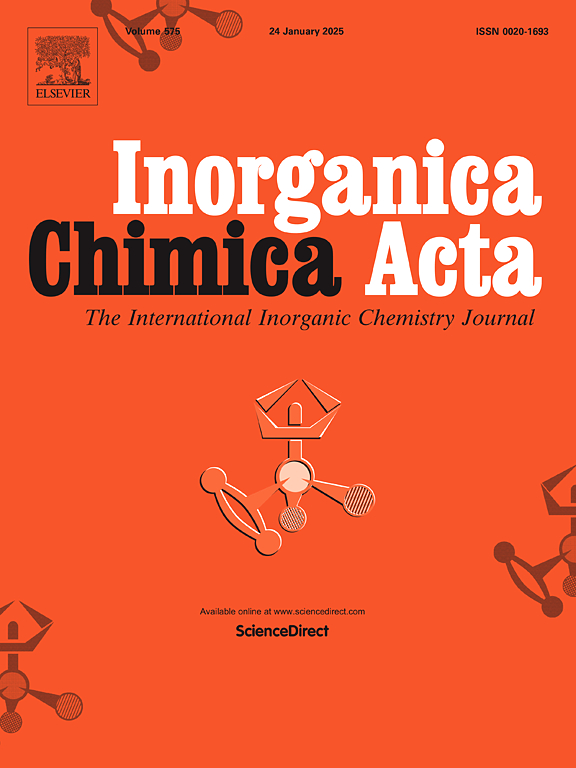揭示发光金属有机框架作为检测食品污染物的光学传感器的潜力
IF 3.2
3区 化学
Q2 CHEMISTRY, INORGANIC & NUCLEAR
引用次数: 0
摘要
由于食品中污染物含量的增加,食品毒性已成为人们日益关注的问题。鉴定食源性毒素对保障公众健康和确保食品安全至关重要。近几十年来,传感器技术的进步使得快速、高效、可靠地检测食品污染物成为可能。金属有机框架(mof)由于其活性金属位点、大表面积、优异的化学和热稳定性以及具有可变孔径的可调结构而引起了人们的极大关注,使其成为传统分析技术的有希望的替代品。然而,尽管对mof用于污染物检测进行了广泛的研究,但明显缺乏专门针对基于发光mof的食品污染物光学传感器的研究。本文综述了基于mof的发光光学传感器的设计和开发的最新进展,重点介绍了它们的合成路线,包括溶剂热、机械化学、声化学和电化学方法,以及用于诱导和调节其发光的策略,如配体基、金属基、客源诱导和外络合物发射。特别关注它们的工作机制及其在广泛的食品污染物检测中的应用,包括兽药残留、重金属、农药、微生物病原体、非法添加剂和其他有害物质。本文对稳定性、可扩展性和监管问题等挑战进行了批判性分析,并对强调与实时监控平台集成的未来前景进行了展望。这项工作旨在为研究人员和利益相关者开发下一代传感器以增强食品安全和公共卫生保护提供基础资源。本文章由计算机程序翻译,如有差异,请以英文原文为准。

Unveiling the potential of luminescent metal–organic frameworks as optical sensors for the detection of food contaminants
Food toxicity has become an increasing concern due to the rising levels of contaminants in food products. The identification of foodborne toxins is crucial for safeguarding public health and ensuring food safety. In recent decades, advances in sensor technology have enabled the rapid, efficient, and reliable detection of food pollutants. Metal–organic frameworks (MOFs) have garnered significant attention as efficient sensory materials due to their active metal sites, large surface areas, excellent chemical and thermal stability, and tunable structures with variable pore sizes, making them a promising alternative to conventional analytical techniques. However, despite extensive research on MOFs for contaminant detection, there is a notable lack of studies dedicated specifically to luminescent MOF-based optical sensors for food contaminants. This review comprehensively discusses the latest advancements in the design and development of luminescent MOFs based optical sensors, focusing on their synthesis routes—including solvothermal, mechanochemical, sonochemical, and electrochemical methods—and the strategies employed to induce and tune their luminescence, such as ligand-based, metal-based, guest-induced, and exciplex emission. Special attention is given to their working mechanisms and their applications for the detection of wide spectrum of food contaminants, including veterinary drug residues, heavy metals, pesticides, microbial pathogens, illegal additives, and other hazardous substances. Challenges such as stability, scalability, and regulatory concerns are critically analyzed, along with future perspectives that emphasize integration with the real-time monitoring platforms. This work aims to serve as a foundational resource for researchers and stakeholders developing next-generation sensors for enhanced food safety and public health protection.
求助全文
通过发布文献求助,成功后即可免费获取论文全文。
去求助
来源期刊

Inorganica Chimica Acta
化学-无机化学与核化学
CiteScore
6.00
自引率
3.60%
发文量
440
审稿时长
35 days
期刊介绍:
Inorganica Chimica Acta is an established international forum for all aspects of advanced Inorganic Chemistry. Original papers of high scientific level and interest are published in the form of Articles and Reviews.
Topics covered include:
• chemistry of the main group elements and the d- and f-block metals, including the synthesis, characterization and reactivity of coordination, organometallic, biomimetic, supramolecular coordination compounds, including associated computational studies;
• synthesis, physico-chemical properties, applications of molecule-based nano-scaled clusters and nanomaterials designed using the principles of coordination chemistry, as well as coordination polymers (CPs), metal-organic frameworks (MOFs), metal-organic polyhedra (MPOs);
• reaction mechanisms and physico-chemical investigations computational studies of metalloenzymes and their models;
• applications of inorganic compounds, metallodrugs and molecule-based materials.
Papers composed primarily of structural reports will typically not be considered for publication.
 求助内容:
求助内容: 应助结果提醒方式:
应助结果提醒方式:


